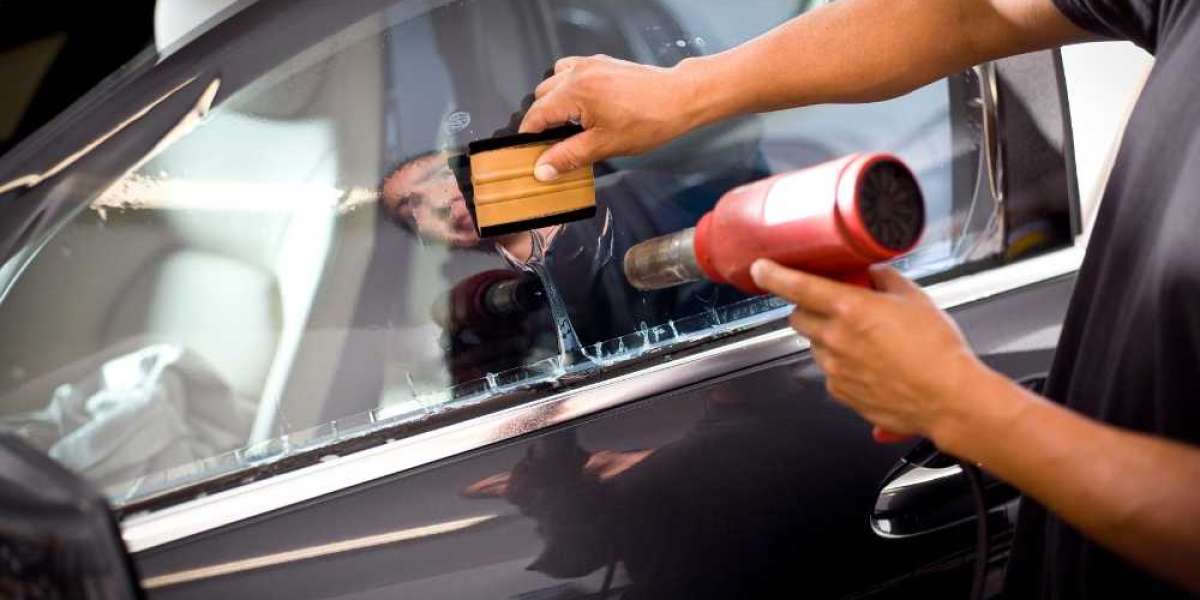Car window tinting is one of the most common aftermarket upgrades vehicle owners consider. It’s a relatively affordable way to enhance a car’s appearance while adding functional benefits like UV protection, privacy, and temperature control. But is car window tinting really worth the investment? The short answer is yes—but it depends on your needs, preferences, and how you maintain it.
In this article, we’ll break down the advantages and disadvantages of car window tinting, explore cost vs. value, and help you determine if it’s a worthwhile upgrade for your vehicle.
What Is Car Window Tinting?
Car window tinting involves applying a thin, transparent film to the interior side of a vehicle’s windows. These films are available in different types, shades, and materials, each with specific benefits. Depending on the tint type, the film can:
Reduce glare
Block ultraviolet (UV) rays
Decrease interior heat
Enhance privacy and security
Improve your vehicle’s aesthetic appeal
There are several types of window tints, including dyed, metalized, carbon, and ceramic films—each varying in quality and price.
The Benefits of Car Window Tinting
1. Improved UV Protection
One of the most valuable features of window tint is its ability to block up to 99% of harmful UV rays. This helps protect your skin from sun damage and reduces the risk of skin cancer during prolonged drives.
UV protection also helps prevent interior fading and cracking, preserving your dashboard, seats, and trim—especially if your car has leather interiors.
2. Heat Reduction and Climate Control
High-quality tints, especially ceramic and carbon films, can significantly reduce interior heat. This means your air conditioner won’t have to work as hard, improving fuel efficiency and comfort, particularly in hot climates.
3. Enhanced Privacy and Security
Window tinting helps keep prying eyes away from your vehicle’s interior. Whether you're parked in a busy city or leaving valuables inside your car, darkened windows offer a level of discretion that boosts both privacy and security.
4. Improved Aesthetics
Tinted windows can give your vehicle a sleek, sophisticated look. A properly tinted car stands out on the road and often feels more modern and customized, increasing curb appeal.
5. Shatter Resistance
In the event of an accident, window tint can help hold shattered glass together. This minimizes the risk of glass fragments causing injury and enhances passenger safety.
6. Reduced Glare for Better Visibility
Tinted windows reduce glare from sunlight and headlights, making driving safer and less fatiguing—especially during sunrise, sunset, or nighttime conditions.
Potential Downsides to Consider
While car window tinting offers many benefits, it’s important to understand some of the drawbacks.
1. Cost
The initial cost can vary depending on the quality of the film and the vehicle type. Entry-level dyed tints may cost $100–$200, while premium ceramic tints can cost $400–$800 or more for a full vehicle.
2. Legal Restrictions
Each state or country has specific laws about how dark you can tint your windows. Failing to comply can result in fines or required removal. Always research local laws or consult a certified installer before applying tint.
3. DIY vs. Professional Installation
DIY tint kits are cheaper but often result in bubbling, creases, or poor adhesion. Improper installation can reduce visibility and lead to premature peeling. For long-term value, professional installation is highly recommended.
4. Maintenance Requirements
Tinted windows require specific care—ammonia-free cleaners, soft cloths, and gentle handling. Failure to maintain the film properly can shorten its lifespan and reduce performance.
Types of Window Tint and Their Value
Different types of window tints offer varying levels of performance, longevity, and cost:
1. Dyed Film
Cost: Low
UV/Heat Protection: Basic
Durability: Shorter lifespan
Best for: Aesthetics on a budget
2. Metalized Film
Cost: Moderate
UV/Heat Protection: Good
Durability: Longer-lasting but may interfere with signals (GPS, radio)
3. Carbon Film
Cost: Moderate to high
UV/Heat Protection: Very good
Durability: High
Best for: Stylish looks and long-term performance
4. Ceramic Film
Cost: High
UV/Heat Protection: Excellent
Durability: Highest
Best for: Maximum performance and comfort
Verdict: While ceramic tints cost more upfront, they offer superior benefits in the long run—making them a smart investment for many drivers.
Is Car Window Tinting a Good Investment?
Yes—if done properly and maintained, car window tinting offers excellent value for most drivers.
It’s Worth It If You:
Drive in hot or sunny climates
Want to protect your car's interior
Prefer added privacy and style
Value comfort and lower cabin temperatures
Plan to keep your vehicle for several years
It May Not Be Worth It If You:
Drive infrequently or park in a garage full-time
Don’t want to deal with legal tint limitations
Plan to sell or trade your car soon
Choose low-quality film or DIY installation
How to Maximize the Value of Your Tint
To make the most of your investment, follow these tips:
Choose a reputable tint shop with good reviews and warranty offerings.
Ask about local legal limits before selecting a shade.
Avoid ultra-low-cost films that may fade or peel quickly.
Follow proper aftercare and cleaning instructions.
Store your vehicle in shaded or covered areas when possible.
Conclusion: Is It Worth It?
Car window tinting is absolutely worth it for most drivers—provided you select the right film, use a professional installer, and take care of it afterward. The combination of protection, comfort, safety, and style makes it one of the most cost-effective upgrades you can make to your vehicle.
If you live in a sunny area, care about your vehicle’s interior, or simply want your car to look sharper, tinting your windows is a decision you’re unlikely to regret.











